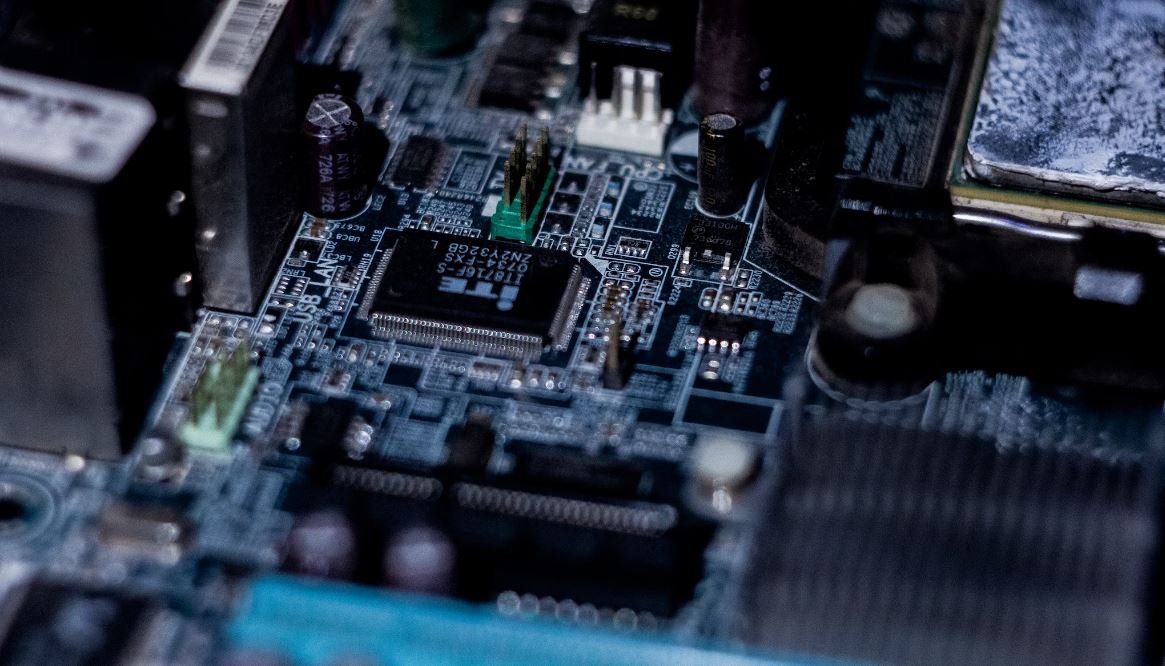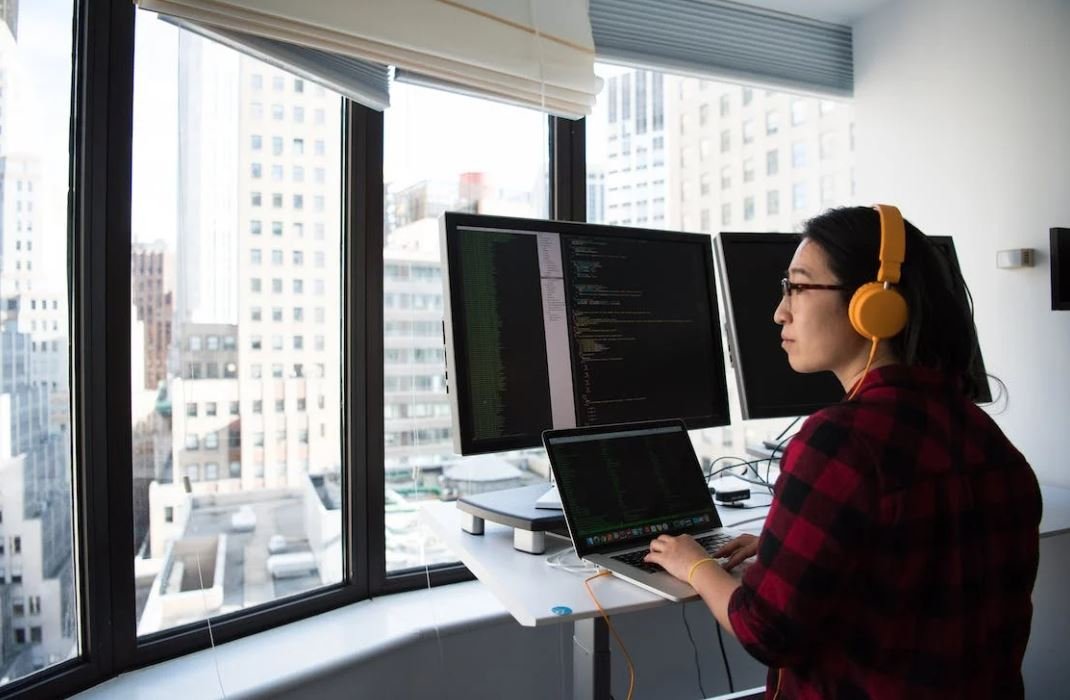Deepfake Examples in Real Life
Deepfake technology has been making headlines in recent years, raising concerns about the spread of disinformation and the potential for misuse. Deepfakes refer to manipulated or synthesized images, videos, or audios that convincingly depict events or individuals that have never taken place or existed. As these technologies continue to advance, it is crucial to explore real-life examples to understand the implications they may have on society.
Key Takeaways
- Deepfakes use AI algorithms to create realistic fake images, videos, and audios.
- They can be used for both entertainment and malicious purposes.
- Understanding deepfakes is important to identify and combat their potential threats.
One of the most prominent examples of deepfake technology is the creation of **synthetic media** featuring public figures like politicians and celebrities. These manipulated videos can be convincingly altered to make it seem like someone said or did something they never actually did. This raises concerns about the spread of misinformation, as deepfakes can easily fool viewers into believing that false events actually occurred. It also highlights the need for vigilance and critical thinking when consuming media. *Deepfakes blur the line between reality and fiction, challenging our ability to discern truth from deception.*
| Deepfake Example | Description |
|---|---|
| Mark Zuckerberg Interview | A deepfake video portrayed Mark Zuckerberg discussing Facebook’s influence on privacy. |
| Barack Obama PSA | A deepfake video presented Barack Obama delivering a scripted public service announcement. |
Moreover, **political manipulation** is a concerning application of deepfakes. By creating fake videos or speeches, malicious actors can **sway public opinion** or **incite social unrest**. Imagine a fabricated video of a political leader making controversial statements that spark protests or violence. The potential consequences highlight the importance of media literacy and verification processes. *Deepfakes have the power to manipulate public discourse and fuel ideological divisions.*
Types of Deepfakes
- Face-swapping deepfakes: These replace a person’s face in an existing video with someone else’s face.
- Lip-syncing deepfakes: These alter the lip movements of a person in a video to match a new audio track, making it appear as though they are saying things they never actually said.
- Vocal deepfakes: These manipulate and synthesize audio clips to sound like a specific person.
| Deepfake Application | Concerns |
|---|---|
| Revenge Porn | Violation of privacy and harm inflicted on individuals. |
| Financial Fraud | Creation of fake videos or audio to deceive individuals and extract money unlawfully. |
| Identity Theft | Potential misuse of deepfakes for impersonation and fraud. |
Additionally, deepfakes pose a significant threat to **journalistic integrity**. **Fake news** can be amplified utilizing deepfake technology, making it challenging to differentiate between authentic and fabricated content. This undermines the credibility of reliable news sources, eroding trust within society. *Deepfakes contribute to the proliferation of misinformation, making it increasingly difficult to discern fact from fiction.*
In conclusion, deepfake technology has the potential to significantly impact various aspects of society. From **politically motivated disinformation** to **personal privacy concerns**, understanding and addressing the risks associated with deepfakes is crucial. By staying informed, promoting media literacy, and supporting technological advancements to detect and mitigate deepfake content, we can strive for a more secure and credible digital environment.

Common Misconceptions
Deepfake Examples in Real Life
There are several common misconceptions surrounding the topic of deepfake examples in real life that can lead to misunderstandings. It’s important to address these misconceptions to have a clearer understanding of the issue.
Misconception 1: Deepfake Videos Are Easy to Spot
Contrary to popular belief, deepfake videos can be highly convincing and challenging to differentiate from genuine videos. The advanced algorithms used to create deepfakes have significantly improved their quality over time.
- Deepfake technology utilizes artificial intelligence and machine learning techniques, making it difficult to detect inconsistencies.
- Deepfakes can convincingly mimic the facial expressions, movements, and voice of the person being replaced.
- Even experts find it challenging to identify high-quality deepfake videos without specialized forensic analysis tools.
Misconception 2: Deepfake Technology Is Only Used for Harmful Purposes
Another misconception is that deepfake technology is exclusively used for malicious activities or spreading misinformation.
- Deepfake technology has potential positive applications in various sectors, such as entertainment and film industry.
- Some organizations and researchers use deepfakes for educational and awareness campaigns.
- It is essential to differentiate between harmful deepfakes and legitimate uses of the technology.
Misconception 3: Deepfakes Are Limited to Video Manipulation
Deepfakes are not limited to video manipulation only; they can also be applied to audio and images.
- Audio deepfakes can replicate someone’s voice and generate speech that sounds remarkably realistic.
- Image deepfakes can alter photographs, creating artificial and misleading visual content.
- Combining different types of deepfakes can have more significant impact and potential for misuse.
Misconception 4: Deepfakes Are an Unstoppable Threat
While deepfakes pose a significant challenge, considering them an unstoppable threat is an exaggeration.
- Researchers and tech companies are actively developing methods to detect and combat deepfakes.
- Advancements in AI and deepfake detection tools can help identify manipulated content.
- Collaboration between technology experts, policymakers, and social media platforms can mitigate the risks associated with deepfakes.
Misconception 5: Deepfakes Are a New Phenomenon
Deepfake technology has received significant attention in recent years, but it is not entirely a new phenomenon.
- The concept of creating digital manipulations or synthetic media has existed for decades.
- Deepfake technology is an advancement that has gained prominence due to its potential impact and availability.
- Comprehending the historical context of synthetic media helps in developing effective strategies to address the challenges posed by deepfakes.

Deepfake Examples in Real Life
Deepfake technology, which uses artificial intelligence to manipulate or generate fake media content, has gained widespread attention in recent years. While initially used for entertainment purposes, it has raised concerns due to its potential for misinformation and deception. This article explores ten real-life examples of deepfake applications and their implications.
1. Fake Political Speeches
In this example, deepfake technology was used to generate a realistic video of a politician delivering a speech they never made. This highlights the potential for deepfakes to mislead the public and manipulate public opinion.
2. Misattributed News Reports
A deepfake news report appeared to show a prominent news anchor reporting false information, leading to confusion and concern among viewers. This emphasizes the need for media literacy and critical thinking to combat deepfake misinformation.
3. False Corporate Communications
Deepfakes have been used to create seemingly authentic messages from company executives, spreading false information and potentially causing financial harm. This underscores the importance of verifying the source of information in the digital age.
4. Celebrity Scandals
Deepfake videos have been created to fabricate scandalous situations involving celebrities, tarnishing their reputation and causing public outrage. This exposes the vulnerability of public figures to fake media manipulation.
5. Impersonation for Fraudulent Purposes
Criminals have used deepfake technology to impersonate individuals, attempting to gain unauthorized access to sensitive information or carry out fraudulent activities. This presents challenges for identity verification systems and cybersecurity.
6. Historical Revisionism
Deepfakes have the potential to rewrite history by altering or fabricating footage of significant events, challenging the authenticity of historical records. This raises important ethical and societal questions about the preservation of truth.
7. Revenge Pornography
Deepfake images and videos have been used maliciously to fabricate explicit content featuring individuals without their consent. This highlights the urgent need for legislation and technology to combat the harmful effects of deepfake pornography.
8. Discrediting Political Opponents
Deepfakes have been employed as a tool to damage the credibility of political opponents by creating false videos depicting them engaging in illicit activities. This emphasizes the potential for deepfakes to influence elections and public perception.
9. Fake Video Evidence in Trials
Deepfake videos can pose a threat to the justice system by introducing fabricated evidence that can mislead jurors and sway the outcomes of trials. This challenges the reliability and admissibility of video evidence.
10. Entertainment and Creative Purposes
While deepfakes present serious concerns, they have also been used in the entertainment industry to recreate beloved actors or historical figures for movies and TV shows. This raises questions about the boundaries between art, technology, and authenticity.
In conclusion, deepfake technology has the potential to profoundly impact society as it becomes more sophisticated and accessible. The examples provided highlight the various ways in which this technology can be exploited for misinformation, fraud, and manipulation. It is crucial for individuals, institutions, and policymakers to remain vigilant, promote media literacy, and develop strategies to detect and counter the harmful effects of deepfakes.
Frequently Asked Questions
What are deepfakes?
Deepfakes are manipulated images, videos, or audio recordings that are produced using artificial intelligence technology, specifically deep learning algorithms. They involve the superimposition of one person’s face onto another person’s body or altering the facial expressions, lip-syncing, or speech of a person in a video to make it appear authentic.
How does deepfake technology work?
Deepfake technology uses deep learning algorithms, particularly generative adversarial networks (GANs), to create realistic and seamless visual or audio manipulations. GANs consist of two neural networks – a generator network that produces the manipulated content and a discriminator network that tries to distinguish between real and fake content. They work together in a feedback loop to improve the quality and believability of the deepfakes.
What are some popular examples of deepfakes in real life?
Some popular examples of deepfakes include videos that manipulate famous figures like politicians, celebrities, or public figures. For instance, there have been deepfake videos of political leaders giving speeches they never delivered, celebrities starring in adult films without their consent, and impersonations of famous actors in movie scenes.
Are deepfake technologies only used for unethical purposes?
No, deepfake technologies have various applications beyond unethical uses. They can be utilized for entertainment purposes, such as in movies or video games, where actors can be digitally transformed into different characters. Additionally, deepfakes can aid in research and development, allowing for realistic simulations or virtual environments.
Is it illegal to create and distribute deepfake content?
The legality of creating and distributing deepfake content varies by jurisdiction. In many places, creating and sharing explicit, non-consensual deepfake pornography is considered illegal, as it violates privacy and consent laws. However, the laws around deepfake technology are rapidly evolving, and the legality is often dependent on the context and intent behind the creation and dissemination of the content.
How can deepfake technology be detected?
As deepfake technology continues to advance, so does the development of detection methods. Some common techniques used to detect deepfakes include analyzing inconsistencies in eye movements, facial expressions, or reflections in glasses, as well as examining artifacts or anomalies that may appear in the manipulated content.
What are the potential risks associated with deepfakes?
Deepfakes pose several risks, including the spread of misinformation, defamation, blackmail, and violation of privacy rights. As deepfakes become more sophisticated and difficult to detect, they can be used to deceive and manipulate individuals or even entire populations, leading to harmful consequences in areas such as politics, news media, and personal relationships.
Can deepfake technology be used for positive purposes?
Yes, deepfake technology has the potential for positive applications. It can be employed in the film industry to create realistic visual effects, facilitate dubbing or voice acting, and bring deceased actors back to the screen. Deepfakes may also have uses in education and training, allowing for interactive simulations or language learning.
What are the efforts being made to combat deepfake technology?
Organizations and researchers are working on developing robust deepfake detection methods to combat the spread of manipulated content. Government agencies and tech companies are investing in AI-driven tools to identify and mitigate the risks associated with deepfakes. Additionally, raising awareness and educating individuals about deepfake technology and its potential consequences can help prevent their proliferation.
How can I protect myself from falling victim to deepfake manipulation?
To protect yourself from falling victim to deepfake manipulation, it is crucial to be cautious of the content you consume online. Be skeptical of videos or images that seem suspicious or too good to be true. Verify information from trusted sources, use secure platforms, enable two-factor authentication, and regularly update your security software to minimize the risk of being targeted by deepfake-based attacks.




